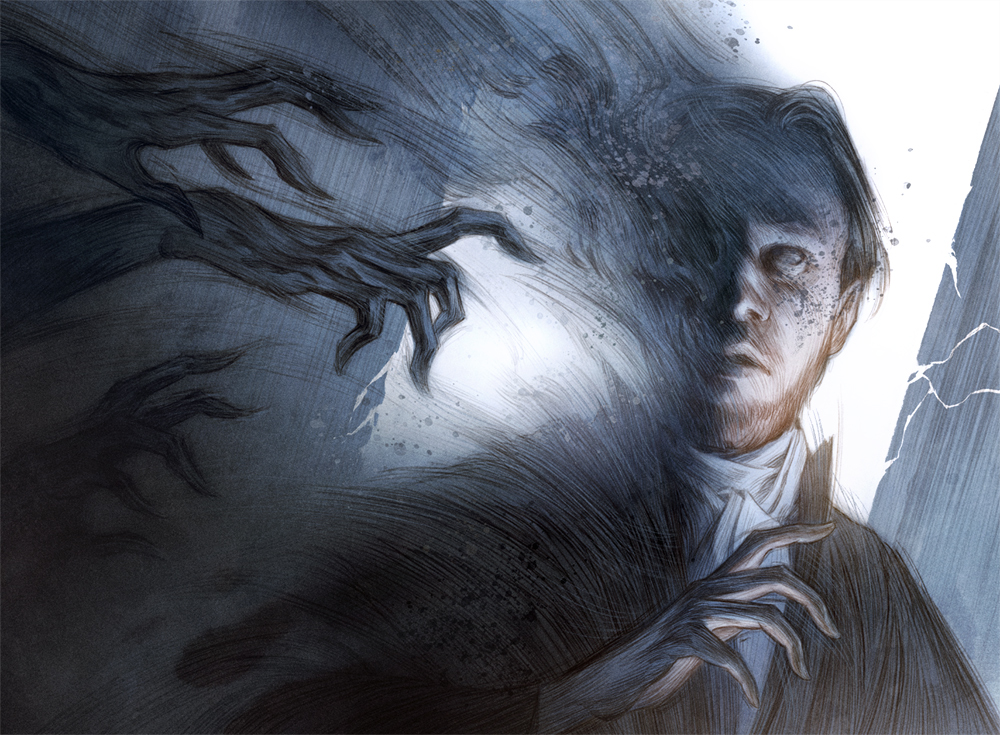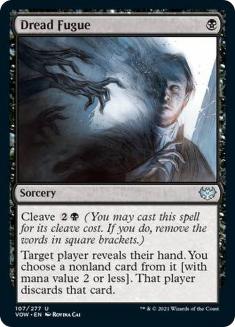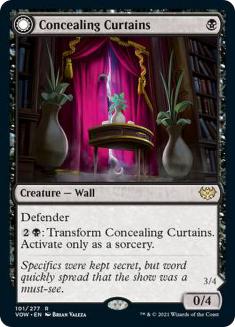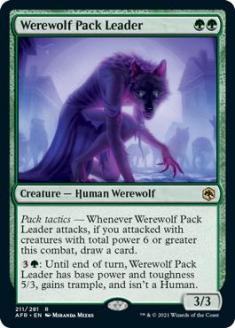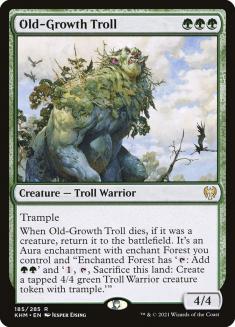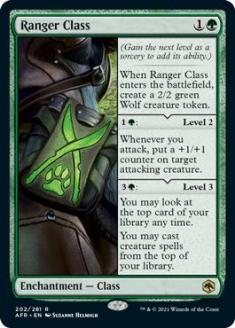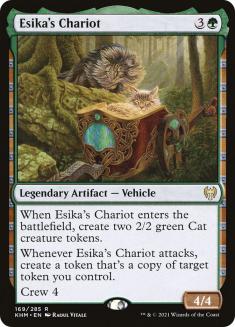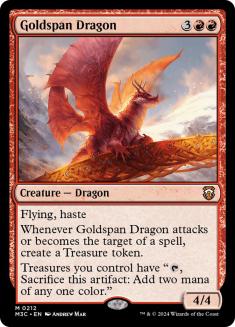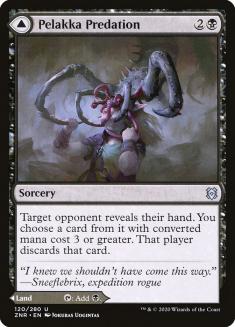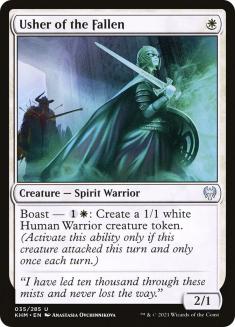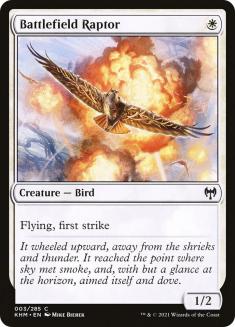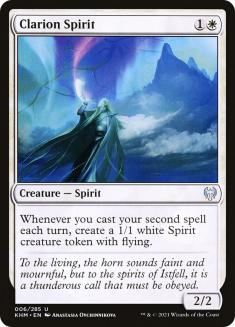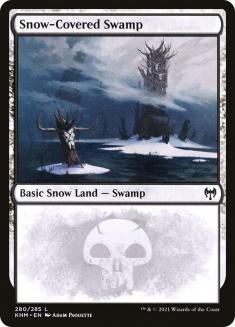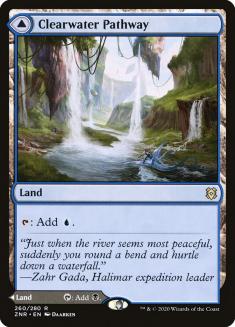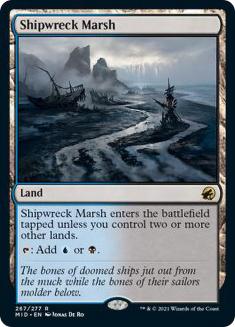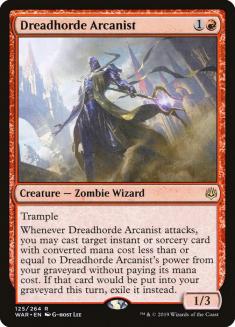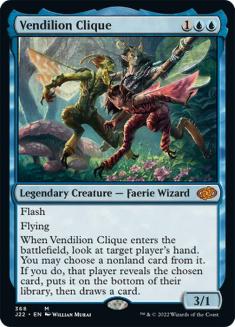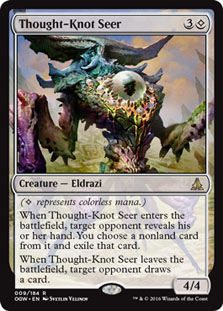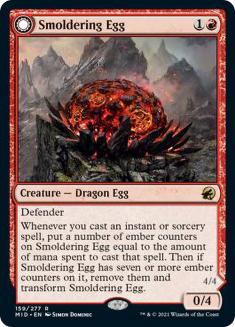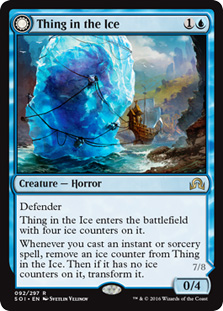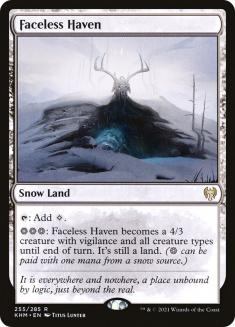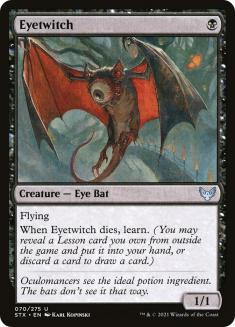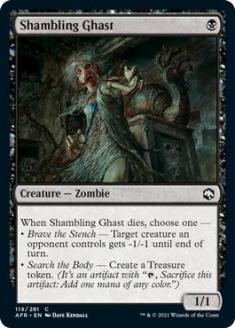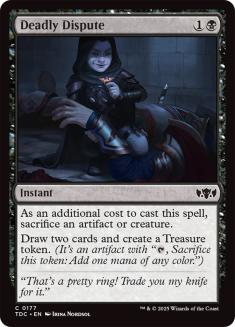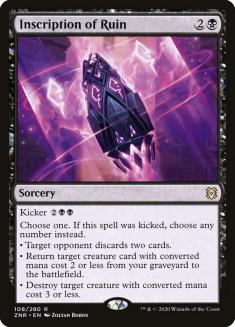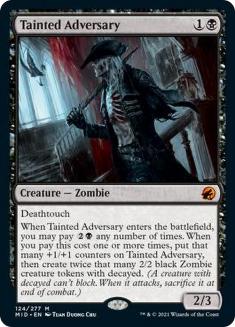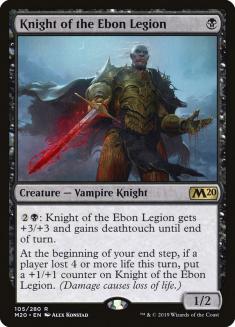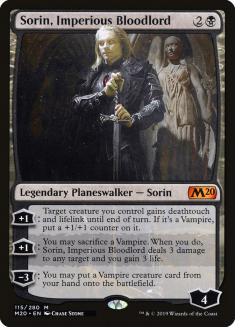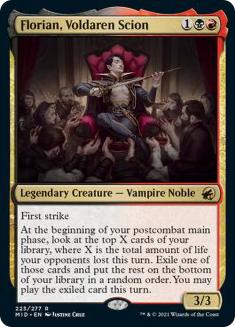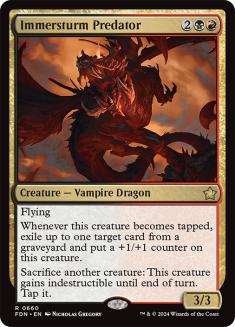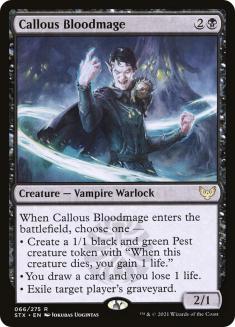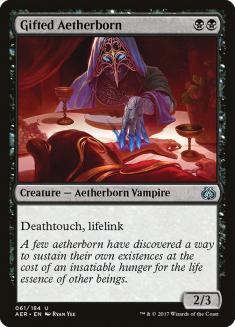I’ve basically built my entire Magic career off good selective discard spells, and it blows my mind that we get two high-quality ones in the same set. If the legacy of Innistrad: Midnight Hunt is graveyard-enabling cantrips like Consider or Faithful Mending, the legacy of Innistrad: Crimson Vow is probably going to be the high-powered discard action of Dread Fugue and Concealing Curtains.
Of these two cards, Dread Fugue has the more obvious parallel and the more obvious pedigree of Constructed greatness. One-mana selective discard is basically a shoe-in for Constructed. But Dread Fugue isn’t quite Inquisition of Kozilek, and even then there are still a few things to consider when figuring out where the card belongs.
A lot of the things to think about with Dread Fugue relate to the direct comparison to Inquisition of Kozilek. Being able to discard a three-drop is a big difference from being capped at two-drops. Three-drops are often where you start to see a big jump in power level, and these days a big jump in incidental value against spot removal. When you Infernal Grasp a Werewolf Pack Leader everything is cleaned up, but the same exchange against the most-played three-drops in Standard leaves you down some other advantage even if you are up a mana. The one-mana mode of Dread Fugue will trade for cards you could have just spent spot removal on (and an Infernal Grasp drawn later will be more useful than a Dread Fugue), where Inquisition of Kozilek can trade for things that you’re glad to handle before they resolve.
Ranger Class does throw a wrench in this discussion, similar to the old Thoughtseize–Bitterblossom equation. Once you have a high-impact, hard-to-kill two-drop in the format, a one-drop discard spell becomes a critical part of the decks playing it. Standard is also a format full of similar high-impact, bad-to-kill-after-resolving cards that are outside the range of Inquisition of Kozilek but are selectable with a cleaved Dread Fugue. Ending up down three mana on a discard spell to make the trade isn’t ideal, but it’s probably better than any other trade for Esika’s Chariot and about the expectation of losing mana against Goldspan Dragon.
Another good comparison for Dread Fugue is Pelakka Predation. A non-cleaved Dread Fugue is going to be a lot more about having an early play, while you also have the full-cost cleave mode for cleaning up later haymakers. Fugue pretty clearly outclasses Predation here, since trading for an early play is better general coverage than a tapped land and being able to cheaply trade for a Negate or Disdainful Stroke later is going to crack open control matchups more than Predation would.
A word of caution, especially for Dread Fugue’s specific two-cost cap, is that trading for a cheap spell with discard only works if that spell is unique. If your opponent has three similarly powerful two-drops in hand, trading for one without them spending mana on it isn’t the best deal. Think of this as the “Thoughtseize versus Five-Color Humans” rule in Modern. Dread Fugue doesn’t have that issue now because the one-drops in Standard are largely trash, but if that changes with more sets in the format, expect the card to fall out of favor.
The other word of caution I have that is fairly specific to Dread Fugue’s two-drop cap is you really, really need to cast the card on Turn 1. A Turn 2 Thoughtseize or Inquisition of Kozilek on the draw is fine trading up the curve for a three-drop or four-drop play. A Turn 2 Dread Fugue on the draw is pretty terrible. Right now in Standard I think that makes the card iffy for multicolor decks, but Dread Fugue is right at home in Mono-Black Midrange❄ where casting it Turn 1 is basically free.
If you jump back into formats where Lurrus of the Dream-Den is (somehow) still legal, Dread Fugue is much more exciting. The card is a slam dunk for Pioneer where Inquisition of Kozilek doesn’t exist and Dread Fugue can be Thoughtseizes five through eight.
In Historic, there’s an interesting debate between Fugue and Inquisition. There are a similar number of important three-drops and higher-cost cards in Historic you might want to take, so you really need to keep an eye on the metagame to figure out which discard spell you want as your Thoughtseize overflow in Historic. It won’t spark any new decks, but Dread Fugue is a good tool to have in the Rakdos Arcanist (Lurrus) toolbox.
I won’t try to sell you on the card in Modern, though. I can’t imagine the three-mana cleave being efficient enough to see play there.
I’ve listed a few caveats with Dread Fugue, so let’s move on to the card that I have far fewer reservations about. For some reason, many of the initial comments I have read about Concealing Curtains have been disappointed by the granted redraw, but somehow no one remembers that every other creature that does this has been a smash hit. If you want to compare Dread Fugue to Thoughtseize and Inquisition of Kozilek, you’d better compare Concealing Curtains to Vendilion Clique and Thought-Knot Seer. And while Dread Fugue is clearly worse than Thoughtseize and probably a little worse in the abstract than Inquisition of Kozilek, I’m not sure Concealing Curtains is worse than either of those two prior all-stars.
Concealing Curtains shares another lineage: early defenders that transform into threats. The Eye side of the card isn’t quite as impactful as Awoken Horror or Ashmouth Dragon, but the transform condition is literally just paying three mana. There are no hoops; it’s just a good four-drop that you can pay for in installments that blocks early and also curves out and attacks on Turn 3. No real other requirements anywhere, play as aggressive or controlling as you want, and the card is going to do some heavy lifting either way.
Just seriously crazy stuff over here with this card.
Your Mono-Black deck having issues with Esika’s Chariot? Whatever, your solid creature takes care of it while blocking the random early threats. Need more tools to race Alrund’s Epiphany? Yup, 3/4 menace with the natural fit of Faceless Haven is going to do that pretty well while also taking apart some of their setup along the way.
Much like Vendilion Clique, there’s a may clause tucked away here. You aren’t obligated to take a card and give them a chance to draw a relevant threat. In Standard, this probably applies when you Turn 3 transform your Concealing Curtains and don’t see an Esika’s Chariot against Mono-Green Aggro. From there, you can probably handle all the smaller threats in their hand and just don’t want them to draw the perfect curve-topper. It’s not quite the “end of turn Vendilion Clique, hmm, take nothing, you can scoop now to save time,” but the tactical “I don’t care about your hand” is going to come up a lot.
Putting together everything discussing these two great discard effects in Standard, here’s about where I would be starting with Mono-Black Midrange❄.
Creatures (13)
Planeswalkers (5)
Lands (23)
Spells (19)

With this power infusion, I don’t think Mono-Black Midrange❄ has to resort to the Eyetwitch-tier nonsense it was leaning into in the Innistrad: Midnight Hunt era. No offense to sick Eyetwitch synergies or the Bryan Gottliebs who love them, but they aren’t quite there against the Alrund’s Epiphany and Esika’s Chariot level cards in the format just yet. Give me another couple hundred cards in the format and we can chat, but right now I’m more into just jamming with good cards.
I just want to default to Concealing Curtains and Faceless Haven beating my opponent up, and then the rest of my cards can fill in the blanks. I don’t think that’s asking a lot.
With the addition of a great one-drop creature, I want to start checking out Inscription of Ruin again. In the early parts of last Standard I was really impressed with using Inscription of Ruin to just run people down with Mind Rots. Go Blank is certainly a better Mind Rot in the abstract, but once you start getting good stuff to recur, the flexibility of Inscription pushes it ahead.
Inscription also feels like the card that pushes Tainted Adversary into the realm of being good, or maybe they just needed to work together. The two-drop 2/3 deathtouch is just a whatever filler card, and the pseudo-kicker pushes it into the realm of playable, but by leveraging Inscription as even more ways to “draw” late-game Adversaries, you get to play a pretty good split game where you have a good spread of early-game action that doubles as solid late-game topdecks.
Did I even mention Concealing Curtains is a card you can play with Lurrus? Why does Lurrus get a Thought-Knot Seer? This is a slam-dunk card for Historic and Pioneer.
The immediate spot I would want to try Concealing Curtains in is actually the decidedly non-Lurrus Mono-Black Vampires. That deck has always been held back by the lack of a secondary one-drop, but has excelled at splitting the difference between aggro and controlling midrange. That sounds like the perfect job for Concealing Curtains. The Pioneer version is fairly defined and I would just cut four flex slots to fill in the curve with Curtains against other aggro decks.
Let’s do a bit of exploring the Historic options for this deck.
Creatures (23)
- 3 Gifted Aetherborn
- 4 Dusk Legion Zealot
- 4 Champion of Dusk
- 1 Cordial Vampire
- 4 Knight of the Ebon Legion
- 2 Callous Bloodmage
- 1 Voldaren Bloodcaster
- 4 Concealing Curtains
Planeswalkers (4)
Lands (22)
Spells (11)

You could easily be convinced to splash a color in this deck, probably for a lot of the splashier Rakdos Vampires from the last year, but keep it together. Faceless Haven is better than all of them and you know it.
The one thing I would be watching for in the rest of the Innistrad: Crimson Vow previews is a two-drop Vampire better than the current options filling those slots. Gifted Aetherborn was an embarassing trap of a card to play when it was in Standard, and I don’t think that has really changed. I don’t mind a bit of Callous Bloodmage to manage graveyards in a more powerful format, but I would rather just have something in the space to have a nut draw.
In Modern, building with Concealing Curtains gets a bit trickier, but if you want to avoid the Rakdos trap of losing to Sanctifier en-Vec, I can see Concealing Curtains as a one-drop of choice for an Esper or Sultai Lurrus deck. Or maybe it serves some of the Kroxa, Titan of Death’s Hunger role in those Rakdos-based decks as a high drop without being yet another graveyard-dependent card.
The 0/4 body lines up pretty nicely against Ragavan, Nimble Pilferer on the draw in a way few other threats do. Even if the Curtains die to a Lightning Bolt or Unholy Heat (rarely with delirium on Turn 2) after blocking the Monkey, they still blocked the Monkey before trading, when the typical auto-loss pattern is having your Turn 1 creature die to removal on the spot while your opponent gets a free Treasure and card flip. The Curtains even survive a Wrenn and Six ping after blocking, and the threat of transform activation helps mitigate their Lurrus in mirrors with a proactive card.
Dread Fugue and Concealing Curtains are the real deal. Fugue is a strong role-player, and if I had to bet on what the best Standard card in Innistrad: Crimson Vow was at this early point, my chips would be on Concealing Curtains. You’d better get your discard selection skills sharpened up, because they’ll be an important part of winning in the new Standard.

